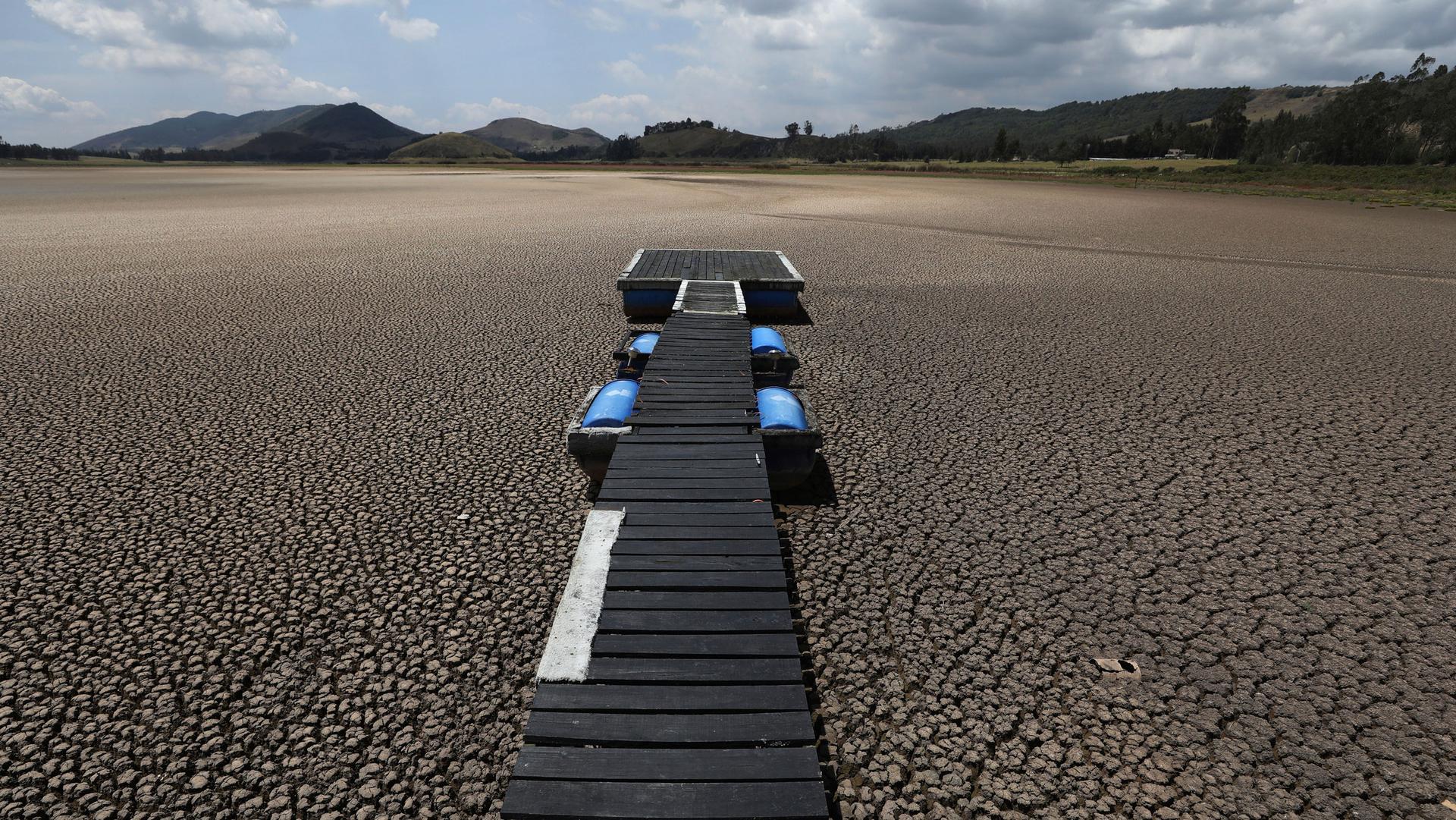5 things to know about the new UN report on climate change
A floating dock sits on the lakebed of the Suesca lagoon, in Suesca, Colombia. The lagoon, a popular tourist destination near Bogota that has no tributaries and depends on rain runoff, has radically decreased its water surface due to years of severe droughts in the area and the deforestation and erosion of its surroundings. Feb. 17, 2021.
The UN-appointed Intergovernmental Panel on Climate Change published a new report Monday summarizing the latest authoritative scientific information about global warming. Here are five important takeaways.
Blaming humans
The report says almost all of the warming that has occurred since pre-industrial times was caused by the release of heat-trapping gases such as carbon dioxide and methane. Much of that is the result of humans burning fossil fuels — coal, oil, wood and natural gas.
Scientists say that only a fraction of the temperature rise recorded since the 19th century — almost 1.1 degrees Celsius (2 degrees Fahrenheit) so far — can have come from natural forces.
Paris goals
Almost all countries have signed up to the 2015 Paris climate accord, which aims to limit global warming to an increase of 2 degrees Celsius (3.6 Fahrenheit) above the pre-industrial average by the year 2100. The agreements says that ideally the increase would be no more than 1.5 degrees Celsius (2.7 degrees Fahrenheit).
But the report’s 200-plus authors looked at five scenarios and concluded that all will see the world cross the 1.5-degree threshold in the 2030s — sooner than in previous predictions. Three of those scenarios will also see temperatures rise 2 degrees Celsius.
Dire consequences
The 3,000-plus-page report concludes that ice melt and sea level rise are already accelerating. Wild weather events — from storms to heat waves — are also expected to worsen and become more frequent.
Further warming is “locked in” due to the greenhouse gases humans have already released into the atmosphere. That means even if emissions are drastically cut, some changes will be “irreversible” for centuries, the report said.
Some hope
While many of the report’s predictions paint a grim picture of humans’ impact on the planet and the consequences that will have going forward, the IPCC also found that so-called tipping points, like catastrophic ice sheet collapses and the abrupt slowdown of ocean currents, are “low likelihood,” though they cannot be ruled out.
Big catch
Meeting the most ambitious goal of the Paris accord — keeping temperature increases to 1.5 degrees Celsius by the end of the century — will only be possible through what are known as “negative emissions.” That means sucking more carbon dioxide out of the atmosphere than is added, something the report suggests could be done after 2050. The panel doesn’t explain how this can be done though, and many scientists are skeptical it’s possible.
